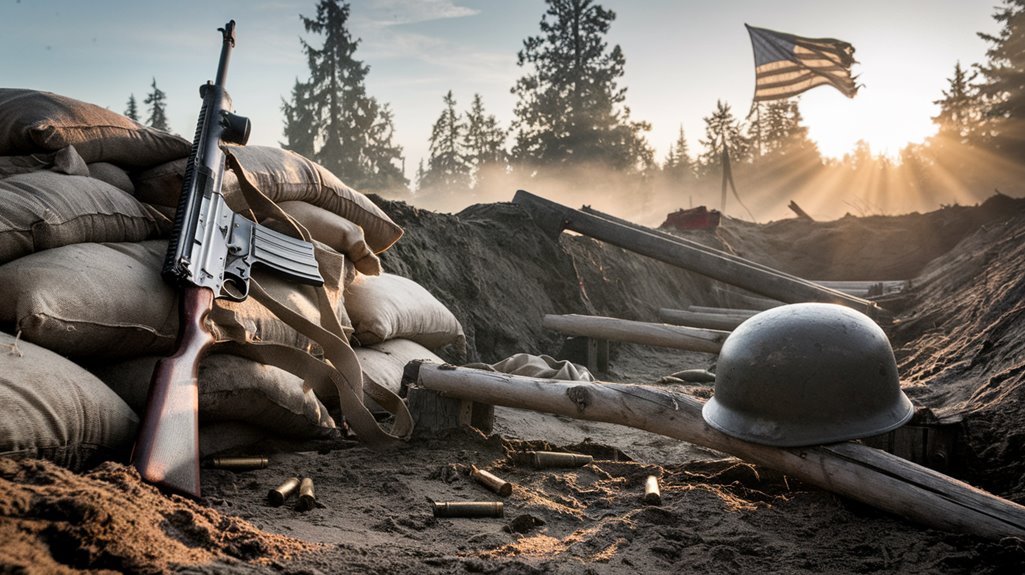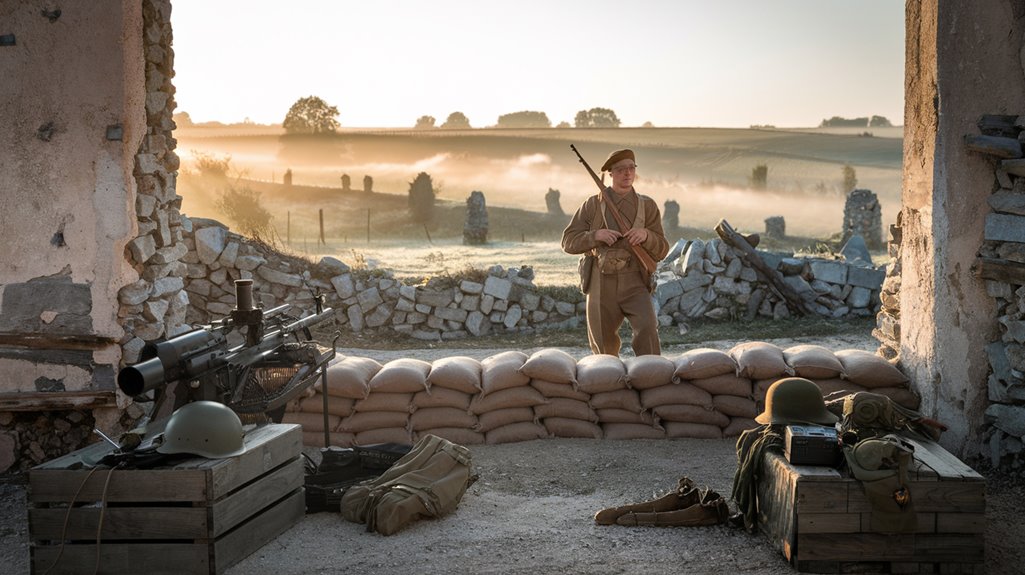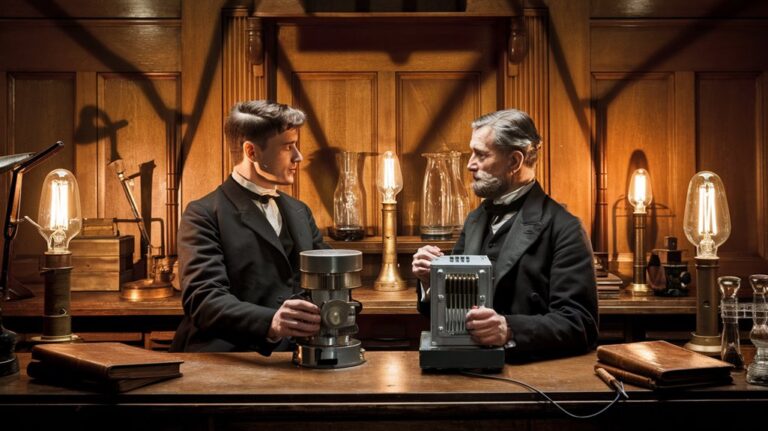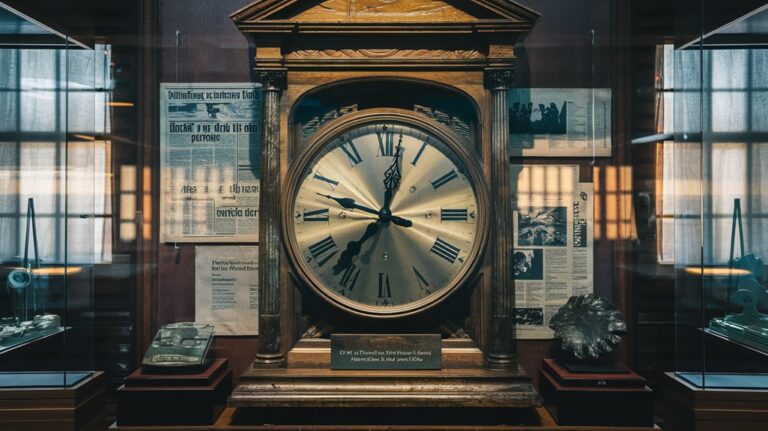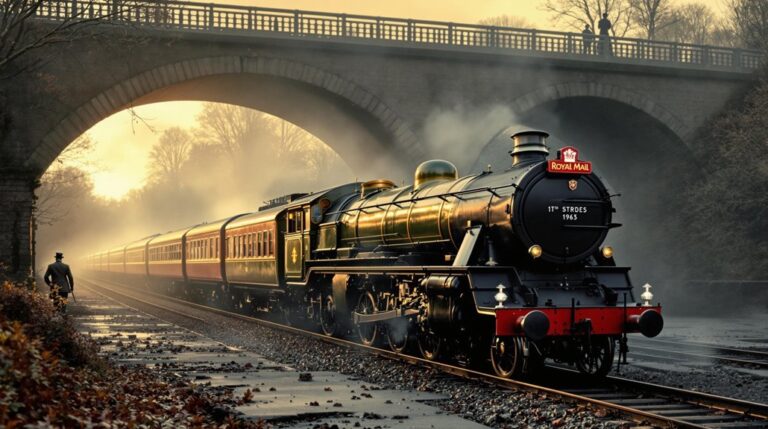One-Man Army: The Sergeant Who Refused to Surrender
War often reveals cowards and heroes alike, but you've probably never encountered a story quite like Sergeant Roy P. Benavidez's. You'll find his actions during a critical Vietnam War rescue mission both shocking and inspiring. Despite suffering 37 separate wounds from bullets, bayonets, and shrapnel, he managed to save the lives of eight fellow soldiers while fighting off waves of enemy forces. His tale of superhuman endurance and tactical brilliance doesn't just chronicle survival – it redefines what's humanly possible.
The Making of a Military Legend
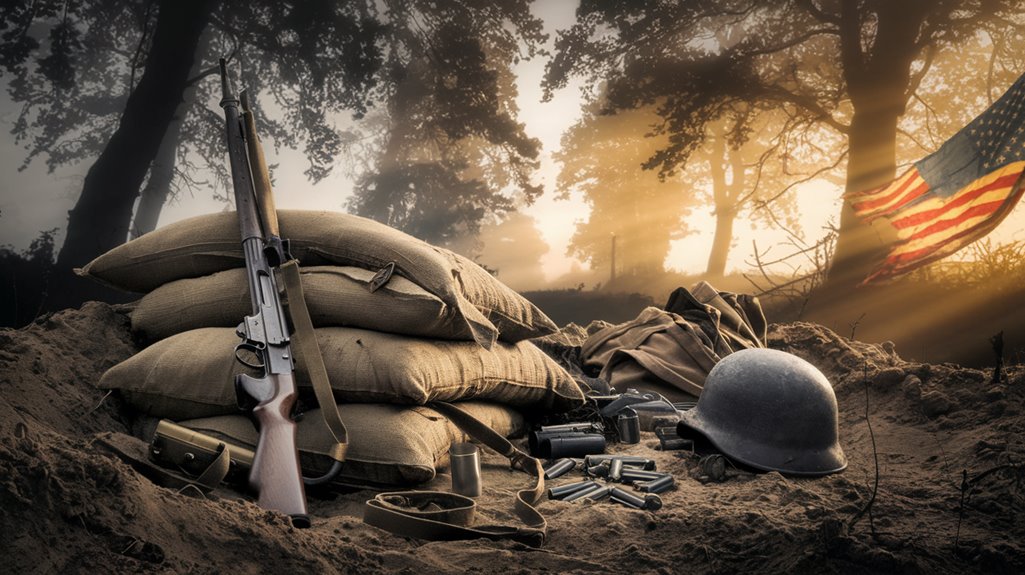
While military legends may seem like mere tales of heroism, they serve as powerful cultural threads that weave soldiers together across time and experience. Through legendary storytelling, these narratives transform ordinary events into extraordinary tales that give meaning to the chaos of war and inspire future generations.
You'll find that military legends aren't just entertaining stories – they're essential tools that help warriors make sense of their experiences and connect with those who've fought before them. Much like how social shares amplify important messages, these stories spread rapidly through military ranks.
Their cultural significance extends beyond mere entertainment, embodying values like courage, loyalty, and resilience. When soldiers share these stories, they're participating in a timeless tradition that bridges the gap between past and present, making their own experiences part of a greater historical narrative. These stories often help soldiers cope with trauma through storytelling as therapy, transforming difficult battlefield experiences into meaningful narratives.
It's through these legends that the true spirit of military service lives on.
A Daring Stand Against Overwhelming Odds
Among the most compelling military legends are stories of soldiers who stood alone against insurmountable odds.
You'll find remarkable tales of heroic sacrifice, like Mikhail Panikakha at Stalingrad or James H. Howard defending American bombers against swarms of German fighters single-handedly.
These warriors showcased relentless determination that defied logic and expectations.
Take Dominic "Fats" McCarthy, who captured 50 German soldiers and secured five machine guns by himself, or Herbert F. Christian, who continued fighting even after losing his leg.
Jack Hanson exemplified this spirit when he used his machine gun while alone to defend his position against overwhelming North Korean forces.
These soldiers demonstrated authentic leadership through their unwavering commitment to the mission, inspiring generations of warriors who followed.
You'll see how they used innovative tactics to overcome their enemies, from Fazal Din's strategic use of grenades against Japanese bunkers to split-second combat decisions that turned the tide of battle.
Their actions didn't just save lives – they changed the course of entire military engagements.
Tactical Brilliance Under Fire
Beneath the raw courage of these lone warriors lay an extraordinary mastery of battlefield tactics.
You'll find their tactical maneuvers leveraged every aspect of the terrain, from using high ground for superior firing positions to exploiting natural cover for concealment. Their battlefield strategies weren't just about shooting – they incorporated sophisticated OODA loop principles to stay ahead of their enemies. The modern battlefield's lethality forced them to disperse and entrench rather than concentrate forces. Under cover of darkness, they executed night combat operations that gave them distinct advantages while their enemies struggled with reduced visibility.
These soldiers understood that survival meant constant adaptation.
They'd employ psychological warfare, staging false retreats to draw enemies into killing zones, while using battlefield deception to multiply their apparent numbers. Through clever resource management and improvised defensive positions, they'd transform disadvantages into advantages.
You'll notice they mastered the art of asymmetric warfare, using every tool at their disposal to overcome seemingly impossible odds.
Impact on Fellow Soldiers and Unit Morale
As the Sergeant's extraordinary acts of valor unfolded, his influence rippled through the entire unit, transforming individual soldiers into a cohesive fighting force. His courageous leadership inspired those around him, showing that even in the darkest moments, victory was possible through unwavering determination. Like Max Thompson at Haaren, he demonstrated that a single soldier's resolve could make the difference between defeat and victory.
You'll find that the Sergeant's impact went far beyond tactical success. His selfless actions built unshakeable trust among his fellow soldiers, while his morale resilience in the face of severe injuries demonstrated that limitations were meant to be overcome. His tendency to study Afghan maps instead of socializing revealed his intense focus on the mission.
When fear threatened to overwhelm the unit, his example provided the strength needed to press forward. The Sergeant's sacrifice and commitment to protecting his comrades created a legacy that continues to inspire new generations of soldiers, serving as a testimony to the power of exceptional leadership under fire.
Legacy and Lessons for Modern Warriors
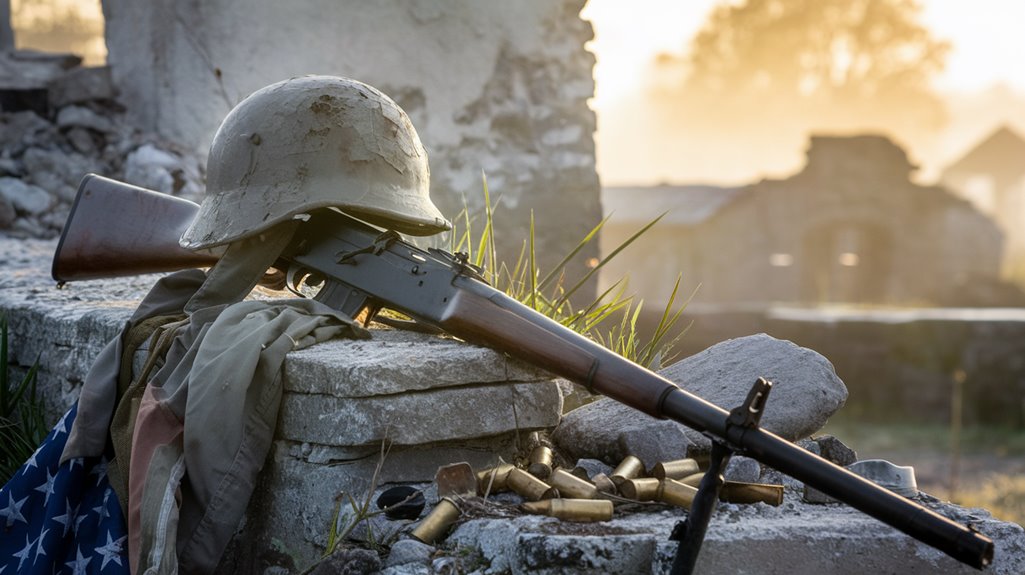
The enduring impact of the Sergeant's heroism extends far beyond his own era, offering essential insights for today's military leaders and warriors.
You'll find in York's story a masterclass in moral courage, as he transformed his personal struggle into decisive action that saved countless lives.
His example demonstrates that ethical leadership isn't just about making the right choices – it's about wrestling with difficult decisions and standing firm in your convictions. Like General MacArthur's emphasis on Duty, Honor, Country, York's unwavering principles shaped his leadership legacy. Japanese soldiers faced intense pressure to choose death over surrender, reflecting the extreme cultural demands placed on their service.
You can learn from his ability to adapt hunting skills to combat situations, showing how civilian experiences enhance military effectiveness.
His post-war dedication to education and community service reminds you that true leadership extends beyond the battlefield.
York's legacy teaches that integrity, resilience, and selfless service remain cornerstones of military excellence.

